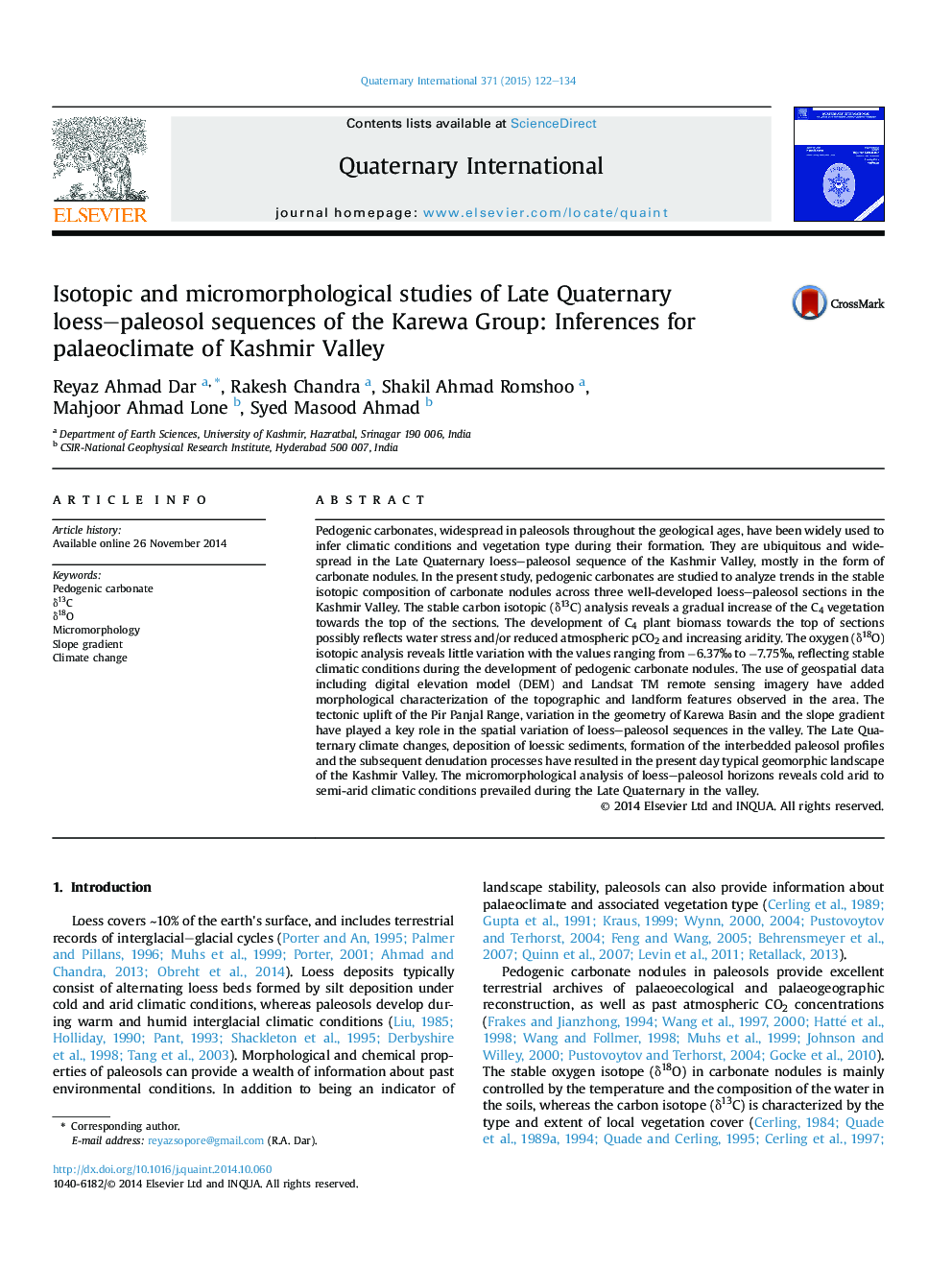| کد مقاله | کد نشریه | سال انتشار | مقاله انگلیسی | نسخه تمام متن |
|---|---|---|---|---|
| 1040784 | 1484126 | 2015 | 13 صفحه PDF | دانلود رایگان |
عنوان انگلیسی مقاله ISI
Isotopic and micromorphological studies of Late Quaternary loess-paleosol sequences of the Karewa Group: Inferences for palaeoclimate of Kashmir Valley
ترجمه فارسی عنوان
مطالعات ایزوتوپیک و میکروورفولوژیکی توالیهای لس پائولسول بعد از کواترنری گروه کروا: نتیجه گیری برای پائئوسلیمات دره کشمیر
دانلود مقاله + سفارش ترجمه
دانلود مقاله ISI انگلیسی
رایگان برای ایرانیان
کلمات کلیدی
موضوعات مرتبط
مهندسی و علوم پایه
علوم زمین و سیارات
زمین شناسی
چکیده انگلیسی
Pedogenic carbonates, widespread in paleosols throughout the geological ages, have been widely used to infer climatic conditions and vegetation type during their formation. They are ubiquitous and widespread in the Late Quaternary loess-paleosol sequence of the Kashmir Valley, mostly in the form of carbonate nodules. In the present study, pedogenic carbonates are studied to analyze trends in the stable isotopic composition of carbonate nodules across three well-developed loess-paleosol sections in the Kashmir Valley. The stable carbon isotopic (δ13C) analysis reveals a gradual increase of the C4 vegetation towards the top of the sections. The development of C4 plant biomass towards the top of sections possibly reflects water stress and/or reduced atmospheric pCO2 and increasing aridity. The oxygen (δ18O) isotopic analysis reveals little variation with the values ranging from â6.37â° to â7.75â°, reflecting stable climatic conditions during the development of pedogenic carbonate nodules. The use of geospatial data including digital elevation model (DEM) and Landsat TM remote sensing imagery have added morphological characterization of the topographic and landform features observed in the area. The tectonic uplift of the Pir Panjal Range, variation in the geometry of Karewa Basin and the slope gradient have played a key role in the spatial variation of loess-paleosol sequences in the valley. The Late Quaternary climate changes, deposition of loessic sediments, formation of the interbedded paleosol profiles and the subsequent denudation processes have resulted in the present day typical geomorphic landscape of the Kashmir Valley. The micromorphological analysis of loess-paleosol horizons reveals cold arid to semi-arid climatic conditions prevailed during the Late Quaternary in the valley.
ناشر
Database: Elsevier - ScienceDirect (ساینس دایرکت)
Journal: Quaternary International - Volume 371, 12 June 2015, Pages 122-134
Journal: Quaternary International - Volume 371, 12 June 2015, Pages 122-134
نویسندگان
Reyaz Ahmad Dar, Rakesh Chandra, Shakil Ahmad Romshoo, Mahjoor Ahmad Lone, Syed Masood Ahmad,
